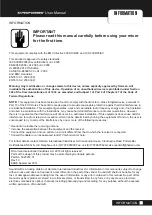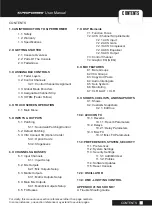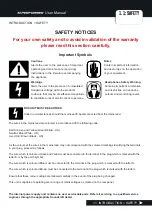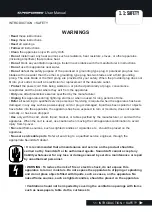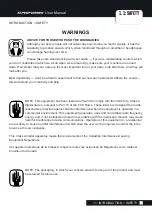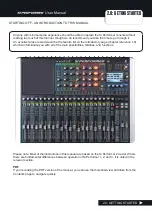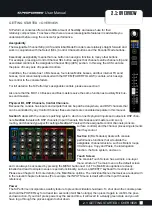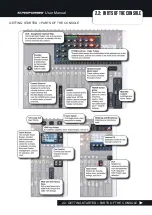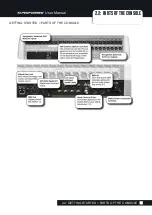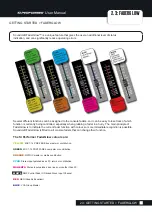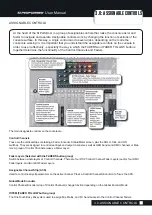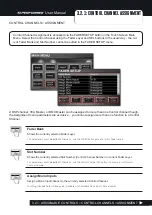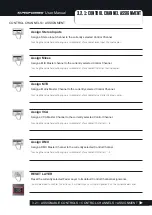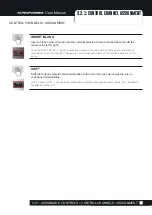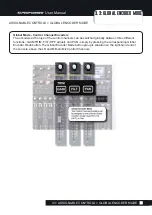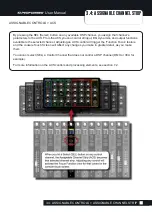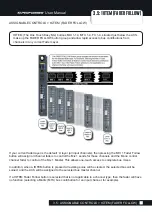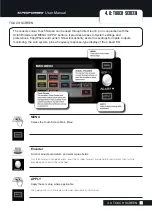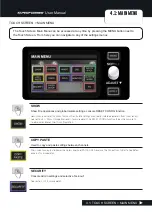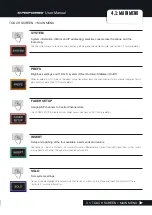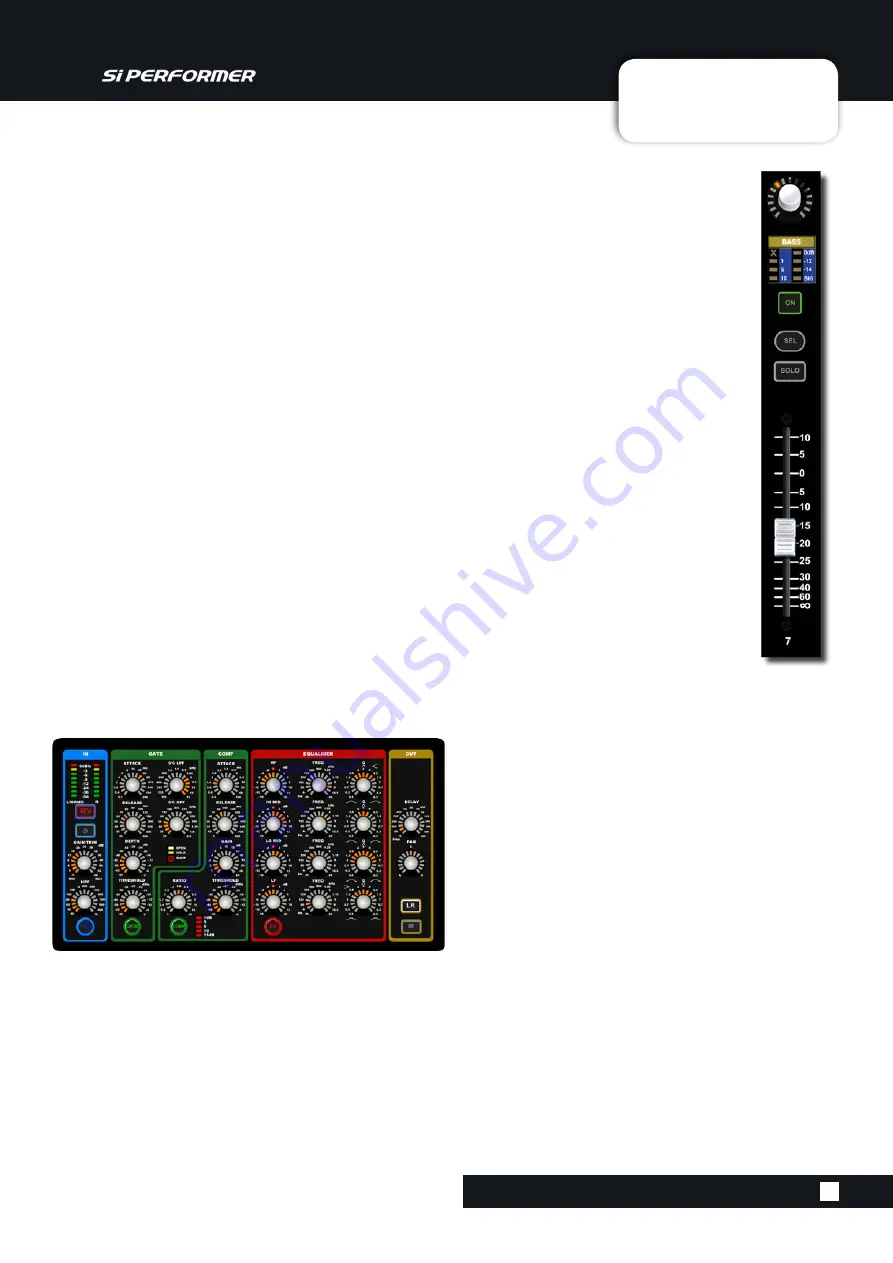
User Manual
2.1: OVERVIEW
GETTING STARTED > OVERVIEW
2.1: GETTING STARTED > OVERVIEW
Si Performer consoles offer an incredible amount of flexibility and ease-of-use for their
relatively compact size. To achieve this, there are several assignable features it is advisable you
understand before using the console for performance.
Assignability
The Assignable Channel Strip (ACS) and Global Mode Encoders are relatively straight forward and
work in conjunction with the Select (SEL) Control Channel buttons and the Encoder Mode buttons.
Essentially, assignability means that one button can
assign
a function to many other buttons.
For example, pressing a Control Channel SEL button
assigns
that channel’s entire channel strip and
associated controls to the Assignable Channel Strip (ACS) section. In this way, the ACS can take
the place of many sets of repeated controls.
In addition, the console has 14 Mix busses, four stereo Matrix busses, and four internal FX send
busses, most conveniently accessed with the tOTEM (FADER FOLLOW) controls, which assign
bus control to the console faders.
For full detail on the Si Performer’s assignable controls, please see section 3.
Also note that the MIX 1-14 Busses and Bus masters serve the same function as Auxiliary Mix bus-
ses and masters.
Physical I/O, DSP Channels, Control Channels
Because the console has inputs and outputs that can be patched anywhere, and DSP channels that
can be controlled by any Control Channel, these elements are considered separate in this manual.
Section 5
deals with the console’s patching system, which connects physical inputs and outputs to DSP chan-
nels.
Section 6
deals with DSP channels (Input Channels, Mix busses and masters, and so on),
routing, and channel-type-specific settings.
Section 7
deals with the assignable control channels (console
surface controls) and the channel processing elements
that they control.
Section 8
(Mix Features) deals with console
performance functions that sit outside the
assignable channel structure, such as Mute Groups,
VCA Groups, Copy And Paste, the interrogation
function, the Solo system, and so on.
Touch Screen
The console Touch Screen has a simple, one-layer
menu structure. The main menu is the default screen
and can always be accessed by pressing the MENU button next to it. The Main Menu options are clearly
labelled and lead to simple menus or special functionality, such as a QWERTY keyboard for text input etc.
Please see Chapter 4 for more detail on the Main Menu options. The individual Menus themselves are dealt with
in the relevant chapter references (For example, the INPUTS menu is dealt with in the Input Channels
reference).
Power
The Si Performer incorporates a safety feature to prevent accidental shut-down. To shut down the console press
and hold the POWER key for at least two seconds (it will flash orange) then press it again to confirm the pow
-
er-down action. If you don’t press power key the second time, it will revert to a steady green state and you will
have to go through the process again to shut down.


